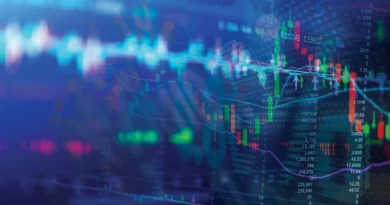Fine wines aren't as profitable as they used to be. The reasons for the crisis in the sector
The market for high-end Burgundies, vintage Champagnes and other fine wines has worsened, as higher interest rates and a slowing Chinese economy have reached this once-booming asset class.
According to the Burgundy 150 index of the Liv-ex wine exchange, the price of Burgundy fell by 15.7% this year through the end of November.
High-end vintage champagne fell 17.2%, while wines from France's Rhone Valley lost an average of 19.4% in price, according to Liv-ex indices.
After heady gains since the start of the pandemic, the declines mark the first major downturn for the fine wine market following a three-year sell-off that began in 2011.
“I don't think it can be sugarcoated: it's been a very challenging year” for the market, said Anthony Maxwell, commercial director of Liv-ex.
Wine has been a standout investment in recent years, driven by demand that exploded during the coronavirus pandemic and the search for alternative assets as major financial markets collapsed last year.
According to Liv-ex's benchmark index, prices rose 39% from the start of 2020 to the end of last year, and even outperformed global stocks during the 2021 stock bull market.
The dearth of excellent vintages it also triggered a rush to buy fine wines.
The 2021 harvest in Burgundy was severely affected by climate change, while a poor harvest in Champagne the same year led many houses to hold on to older bottles.
This helped vintage bubbles enjoy their biggest annual gain ever in 2021, up 41%, and made further big gains last year.
But the mood of the market has changed dramatically in 2023, and investors in many of the previously best-performing wines are now left with a hangover.
Among Burgundies, Domaine Romanée Conti's 2017 Richebourg Grand Cru has fallen 29% this year to £33,015 for a case of 12 bottles.
Domaine Georges Roumier's 2014 Bonnes Mares Grand Cru fell 15%, to £16,369 for a case of 12.
Krug 2008, a vintage left to age for more than a decade in the Champagne house's cellars, rose by almost 60% in value in the months following its release in 2021.
But this year it has fallen by a quarter to £4,350 a case.
According to Liv-ex, Louis Roederer's Cristal 2013 is 22% less at £2,200 a case.
“There were certainly parts of the market that were very bubbly” at the end of last year, said Tom Gearing, chief executive of investment firm Cult Wines, previously a finalist on the British version of The Apprentice.
“The wines that have grown the most in the last three and five years have returned the most” this year.
Weighing on prices is the sharp increase in global interest rates over the last two years which has hit many asset classes hard.
For many investors, this means they now have the ability to put money in the bank and earn 5% or more interest – not far from the 7% or so return that wine has traditionally offered on average over the long term.
“Interest rates are making people think twice,” said Matthew O'Connell, chief investment officer at wine trader Bordeaux Index.
“It's the quietest market I've ever seen.
Prices have dropped." Chinese and other Asian buyers who have driven demand for Burgundy in recent years have also retreated as China's economy has failed to recover strongly after strict coronavirus lockdowns were lifted.
“People were hoping for it.
.
.
Unlocking China would see that area [of demand] return, but it won't materialize,” said Liv-ex's Maxwell.
There are still occasional opportunities for profit, however, for example in some Italian wines, which have not enjoyed the same price surge as Champagne and Burgundy in recent years and have fared better this year.
Gregory Swartberg, chief executive of London-based wine investment firm Cru Wine, bought Roagna, Barolo, Pira Vecchie Viti 2016 for his clients in June, and profited from the price increase, aided by production levels very low and high scores from critics.
He recently purchased for his customers Mouton Rothschild 2019, the label of which was designed by Danish-Icelandic artist Olafur Eliasson and shows the path of the sun in relation to the winery over the course of a year.
Swartberg sees value in 2019 because it is down from its all-time highs and is priced favorably compared to other Mouton vintages.
Expectations are growing that global central banks will cut interest rates this year, which should help the wine market, and many in the industry, such as Bordeaux Index's O'Connell, believe prices are close to stabilisation.
However, some think it may take time for buyers to return after this year's painful price decline.
“We don't believe prices have reached the bottom yet,” Liv-ex's Maxwell said.
“Price pressure will certainly persist next year.
I'm not sure buyers feel confident enough to re-enter the market." © The Financial Times Limited 2023.
All rights reserved.
It may not be redistributed, copied or modified in any way.
The Financial Times is not responsible for the accuracy or quality of this translation.
Money.it has rights to republish some limited articles from the Financial Times.
This is not a live feed of Financial Times content.




